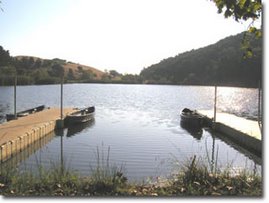What If FOX News Is Wrong About Global Climate Change? #2
Growing low-oxygen zones in oceans worry scientists
WASHINGTON — Lower levels of oxygen in the Earth's oceans, particularly off the United States' Pacific Northwest coast, could be another sign of fundamental changes linked to global climate change, scientists say.
They warn that the oceans' complex undersea ecosystems and fragile food chains could be disrupted.
In some spots off Washington state and Oregon , the almost complete absence of oxygen has left piles of Dungeness crab carcasses littering the ocean floor, killed off 25-year-old sea stars, crippled colonies of sea anemones and produced mats of potentially noxious bacteria that thrive in such conditions.
Areas of hypoxia, or low oxygen, have long existed in the deep ocean. These areas — in the Pacific, Atlantic and Indian oceans — appear to be spreading, however, covering more square miles, creeping toward the surface and in some places, such as the Pacific Northwest , encroaching on the continental shelf within sight of the coastline...
Read more @ McClatchy News.
A Fox News memo posted by FishbowlDC on November 23 acknowledged "a series of mistakes on FNC in recent months" and stated that in the future, "there is zero tolerance for on-screen errors" and "[m]istakes by any member of the show team that end up on air may result in immediate disciplinary action against those who played significant roles in the 'mistake chain,' and those who supervise them ... up to and including termination":
Read the memo...



























3 comments:
I think it is a safe bet that if higher levels of oxygen were found in the earth’s oceans, “scientists” would attribute it to global climate change.
I wonder what the oceanic oxygen levels were during the medieval warming period, which was much warmer than now, and which came about in the absence of human carbon-generating activity?
RK:
Since the Medieval warming period was between now and the last Ice Age, I would theorize that it was part of the data the supports the overall trend of global warming. I would be willing to bet that, if you studied the data between the last ice age and the ice age before that, you would find similar hiccups in the data. Likewise, if you search the caves enough, I'm am certain that the drawings from that period will indicate a hockey stick graph pointing to global warming.
Sunny,
No, once again you misunderstand the significance of the midieval warming period. It occurred between the end of the last ice age (about 10,000 years ago) and now, and it was a period of much warmer climate than now. It was then followed by a cooler period (the "little ice age" from about 1600 to 1850), after which the climate warmed again. We are in that post-1850 warmer period now. Yet even now it is not as warm as was the Midieval period.
So, absent human carbon-generating activities, how did the Midieval period get warmer than now? And what made the earth cool afterwards, in the little ice age? It is these unanswered questions that cause my skepticism of the whole man-made global warming theory.
Of couse, we could always apply Occams Razor to the question, and conclude that the earth warms and cools naturally, in cycles, as it has done for millenia, without any reference to or impact from human activity.
Granted, the natural phenomena theory does not lend itself to grandiose plans for hobbling western economies, reducing western standards of living, and transferring western wealth to the third world countries. So maybe that is the problem with the natural, apolitical theories. There are no bad guys to blame, and as such, no wealth to loot.
Post a Comment